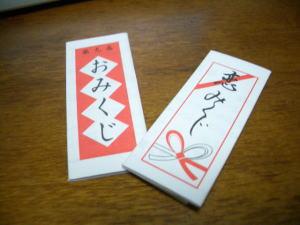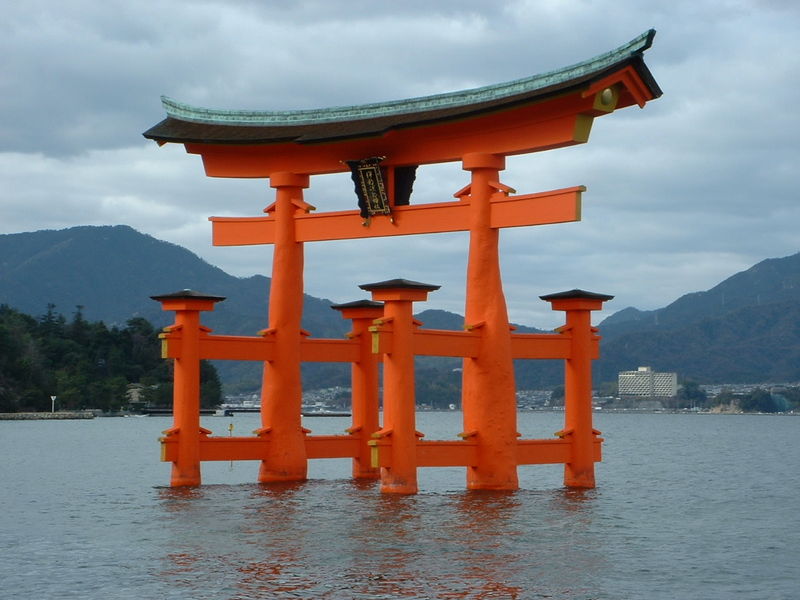 omikuji
omikuji
 omikuji
omikuji
|
Japanese
gomikujih
means gdrawing lotsh in English. Omikuji are random
fortunes written on strips of paper at Shinto shrines
and Buddhist temples in Japan.
These are usually received by pulling out randomly from a box. While
hoping for
the resulting fortune to be good. The piece of paper reveals the
fortune the
year. For example ,Great blessing (åg),
Blessing (g),Middle blessing (g),
Small blessing(¬g), |
 |
 |
Omikuji
History In ancient times, it is likely to draw lots to foretell god's will when chose a successor or decide to an important matter about festival and government in the country. And it is assumed that an origin of a present god lot. Ashikaga Yoshinori was the 6th shogun of the Ashikaga
shogunate who reigned from 1429 to 1441 during the Muromachi period
of Japan.
He is shogun chosen by lot. |
|
When the prediction is bad, it is a custom to fold up the strip of paper and attach it to a pine tree in the temple grounds. This custom reason is a pun on the word for pine tree (¼ matsu) and the verb 'to wait' (ÒÂ matsu). The idea being that the bad luck will wait by the tree rather than attach itself to the bearer. By tying the piece of paper around a tree's branch, good fortune will come true or bad fortune can be averted. But if attach the strip of paper to a pine tree in the temple grounds, it damaged a pine tree. So please tie the strip of paper to prepared place for omikuji. |
 |